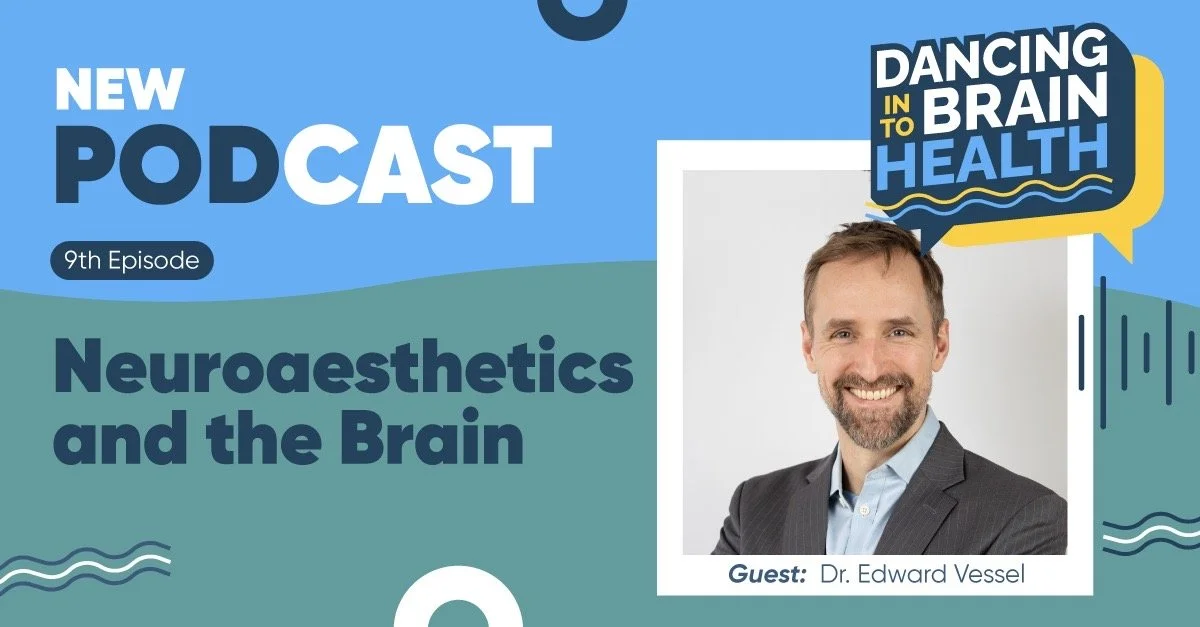Dancing into Brain Health (S1 Ep9): Neuroaesthetics and the Brain
How do we perceive beauty? How can engaging in art and the pleasure we elicit from it help us make sense, meaning and inspire us toward action in our daily activities? Can the experience of pleasure and beauty through the arts strengthenour health?
Our guest on the Dancing into Brain Health Podcast is Dr. Edward Vessel, a neuroscientist who uses behavior, brain imaging and computation to study the psychological and neural basis of aesthetic experiences, creative insight and curiosity. We discuss how neuroaesthetics research is helping us understand the way the brain responds to art, beauty and creativity and how these findings can inform future practice to improve brain health and wellbeing across our life.
Here is a highlight from the episode:
“So the idea is that there’s basically a zone that is on the edge of what you know, that if you were to engage with it, you could potentially have the possibility of improving your world model. One of my big interests is trying to understand and test these theories to see if we can show that aesthetic appeal really is guiding us towards this zone.”
Check out this episode to learn more about Dr. Vessel’s work in aesthetic appeal, meaning-making and brain health.
To learn more about Dr. Edward Vessel here: https://www.ccny.cuny.edu/profiles/edward-vessel and here: http://edvessel.com
Read more:
This episode of Dancing into Brain Health was edited and produced by me, Magda Kaczmarska and Hilary Brown-Istrefi. The music for this show is the title cut from the album, Critical Path by Joe Venegoni and Carl Weingarten.
ABOUT DANCING INTO BRAIN HEALTH PODCAST
Join host Magda Kaczmarska, dancer, researcher, Atlantic Fellow for Equity in Brain Health and executive director of arts and health nonprofit, DanceStream Projects, in uncovering the interconnections of dance, brain health and community. Each episode Magda brings together leading researchers, artists, advocates and thought leaders to illuminate the magical interconnections of dance and brain health and explore their influence on all aspects of our lives.
* New Episodes every month! *
Follow us on IG: @ dancestream_projects or email us at: magda@dancestreamprojects.com


